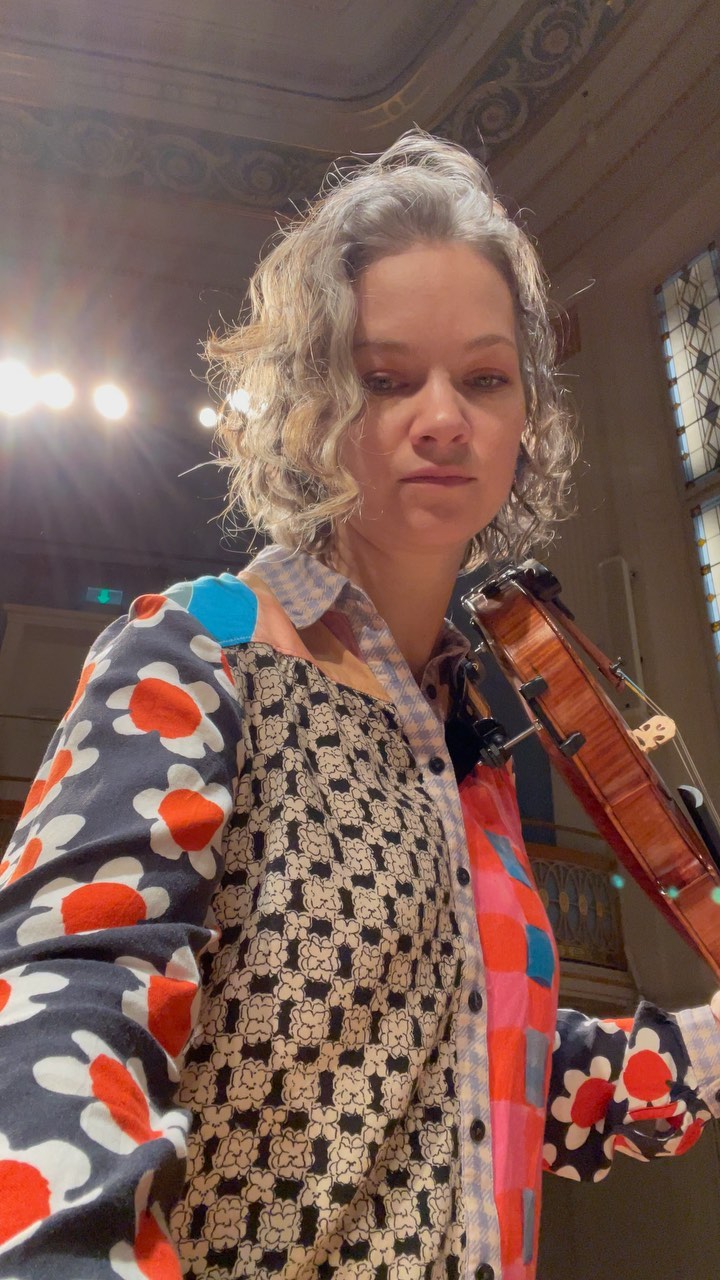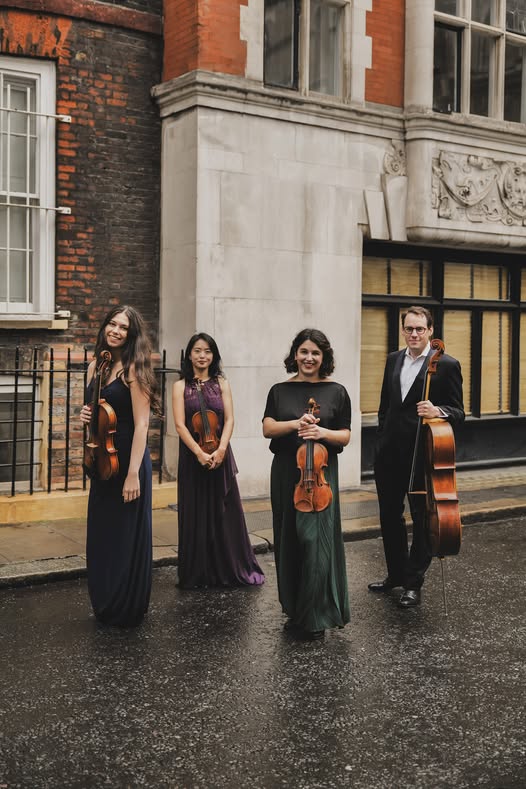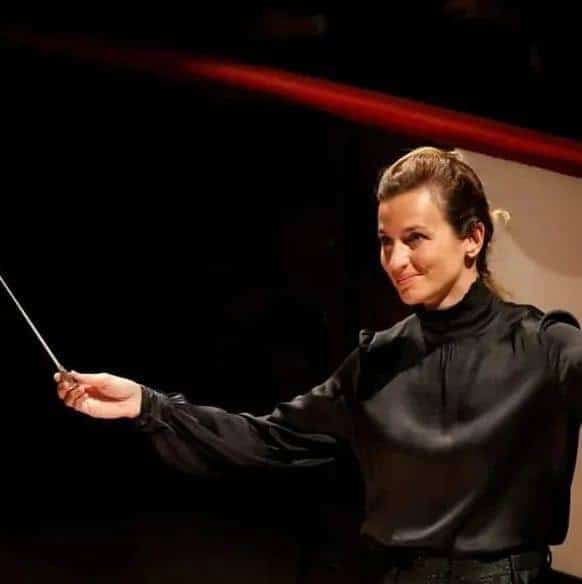Classical numbers – where it hurts most
mainThe last time Hilary Hahn topped the classical charts, I reported that she was selling fewer than 500 copies a week. This time, after an appearance on the Tonight Show, Anne Midgette writes that she’s selling fewer than 1,000 – still peanuts on any pop scale.
Anne quotes a Sony man who says classical accounts for three percent of US record sales. No longer. It’s below two percent, and most of that is made up of non-classical crossover. Real classical music is way below the Nielsen rating line.
This stark and unchaing reality makes the Grammy classical awards materially irrelevant, even if one were to agree that Michael Tilson Thomas’s account of Mahler’s eighth symphony was the best thing to happen in the past musical year.
So where do classical recordings sell? Not in America, that’s for sure. South Korea, as I have written elsewhere, spends most per capita on classics – 18 percent of all music sales are classical. Close behind is France, with 9 percent of the music market.
What that means is that a French newcomer like Renaud Capucon or David Fray can be guaranteed bigger sales and national fame than a US star like Hilary Hahn, no matter what network show she appears on. Much the same is true for Hungary, Austria, Germany, Finland and even the UK, all of which mantain high public profiles for classical musicians.
That leaves the American classical artist in a quandary. With domestic support in steepling decline, more and more may be advised to build their careers in another country.





Norman, I’d also be curious to what extent classical sales mirror the overall decline in record sales in all genres? If they are indeed a smaller piece of the overall pie, that suggests they’re doing even *worse* than pop and rock genres. That looks especially dire when you consider that pop fans are more likely to download music illegally, whereas (older) classical fans may still shell out $17 for a physical CD.
If I were the classical divisions of record companies I’d be looking for more crossover projects, which might actually help sustain the Hilary Hahn’s of the world.
NL replies: Good points, Brian. As far as I can tell, in countries where the trend is strong – Korea, Hungary, France – or where there is a surge of local heroes – Finland, Norway – classical music is bucking the recession and performing better than the rest of the biz.
Illegal downloads cross all genres, classics as much as pop. True, we might assume that classical listeners are older and can afford more. Let’s face it, they cheat just as much.
As for x-over, it has failed for such a long time to produce an economic foundation for classical, I wouldn’t look upon it as a remedy – tho a man I’m lunching with next week still does.
In a city (Birmingham, AL) where only a minority of children in the public schools gets access to instrument instruction before high school, I find that the problem for classical music is exposure.
My organization offers free, drop-in music lessons in the inner city. On Saturdays, demand for string lessons keeps two, sometimes three, teachers busy for 4 hours. At first people came in the door wanting guitar or drum lessons and then happened to try the strings and stick. Now people come in BECAUSE we offer string lessons. These lessons obviously lead to exposure to classical music–and the interest is there. It verges on a hunger in these young people.
Several families have become regulars at the symphony. When we pass along info about free open rehearsals or reduced student tickets to classical events, our families overwhelm us with requests to participate. MOST have never been inside the symphony’s concert hall before.
There are lots of reasons why cutting arts education out of the curriculum is a mistake. Helping classical music sales is not high up on the list. But those who depend on those sales may want to consider how they might support arts educators trying to grow them a customer base.
NL comments: Sounds like a terrific scheme, Jeane.
Thanks for the plug for my article, Norman. One correction to what you wrote — I went through a lot of weekly sales figures and did the math, and classical music is actually over the 2% line. It averaged around 2.5% of overall sales for the weeks I surveyed (randomly selected from 2008 and 2009). Staggering difference, I know (ha).
NL replies: Thanks for that, Anne, and I know your math is better than mine… Still, my calculation and some other data I saw rounded it down to 2 (meaning below 2.5) – and that’s without taking into account how much of what passes as classical is smooch singers, crossover and MOR. I’m so glad you’ve raised the issue again because it cuts right to the heart of the fakery of classical business in the US.
May I suggest that presenting only percentages could also be deceptive: 2% of a bigger market may mean in fact more copies sold than in a small market. So to back up your conclusions, the actual number of sales are required.
That leaves the American classical artist in a quandary. With domestic support in steepling decline, more and more may be advised to build their careers in another country.
Their careers, or just their recording careers? I’m on the fringes of the classical music world, so perhaps there’s a stronger correlation between concert bookings and major-label recordings than I realize. Still, I can’t help but think as the classical music business grapples with the major changes taking place the idea of the prototypical career, one that involves prodigious recording, should change as well.
As part of this change, and as major-label recording contracts dry up I imagine we’ll continue to see more self-publishing (like the SFS and others), live recordings, and other small-scale ventures (e.g. Canteloupe). As big labels and major institutions cease recording, smaller, more flexible and cost-effective labels and groups will take their place. Big changes do not necessarily spell doom.
2.5% seems like a small number, but Soundscan tells us that 373.9m albums were sold last year in the US*. 2.5% of that is 9.3m classical albums. If a third of them were crossover, that’s still 6m real classical albums.
Since the albums in the Billboard chart account for such a small percentage of these sales, the story you should be writing is about the diversity and vitality of our business – about the wonderful records that are still being made that never see the top ten, and about the innovation that is helping many companies to remain profitable in a tough economic climate.
Will you accept that, while a lot of other music gets sold there, that the United States remains a major market for classical recordings?
Will you acknowledge that there’s great work going on in the classical record industry?
NL replies:
1 Yes, although more limited in what is available for sale and more marginal in terms of social impact than in, for instance, France, Hungary, Japan, Norway and Canada, to name just five.
2 Always was, still is, though mostly off the major labels which are reduced, on the whole, to repackaging live performances, not an ideal solution.
Interesting piece but as M.Villeger points out 2% of a large population can be a significant figure:
USA – 260m pop – 2% = 5.2m sales.
UK – 60m pop – 9% = 5.4m sales.
I would be more than happy with 2% sales in the USA.
BBC News reported today: “Violinist Andre Rieu makes pop chart history with album”
http://news.bbc.co.uk/1/hi/entertainment/8503117.stm
Many teens have been commenting on You Tube how much they like the music in the film TWIGHLIGHT.
They are talking about ‘Claire de Lune’ by Debussy. The teens think the film’s composer created it.
The younger generation do like classical music. You just need to change the packaging and content delivery.
I wish what you write about France was true, but the percentage is much lower (6.6 % in 2009). The figure you use was alas, good 10 years ago in my country.
NL replies. I don’t think so – they are IFPI figures for 2008, as far as I recall.
I didn’t know that ifpi gives such detailled analysis of french market, interesting.
Anyway, the reliable figures concerning France, that are from the SNEP and, better, from the Observatoire de la musique, indicates 6.6 % for classical sales 2009, 6.4 for 2008, 6 for 2007, 5.6 for 2006, 5.2 for 2005, 4.3 for 2004, 4.1 for 2003, and so on. All this, of course, as the classical sales weak lower that the global sales.
This strange 9 % was, at last, a figure for the end of the 1990s.
Yours,
Gaetan Naulleau. DIAPASON
NL replies: Merci, Gaetan. I have not seen these figures before but they do conform the upward trend, from 4.1% in 2003 to 6.6% last year, more than 50 percent over six years. That’s very encouraging. I’m puzzled by the discrepancy. I wonder whether the IFPI numbers incorporated classical crossover? at any rate, the picture in France is much healthier than anywhere in the monde anglophone.
Merci, Gaetan. I have not seen these figures before but they do conform the upward trend, from 4.1% in 2003 to 6.6% last year, more than 50 percent over six years. That’s very encouraging. I’m puzzled by the discrepancy. I wonder whether the IFPI numbers incorporated classical crossover? at any rate, the picture in France is much healthier than anywhere in the monde anglophone.
amicalement
Norman